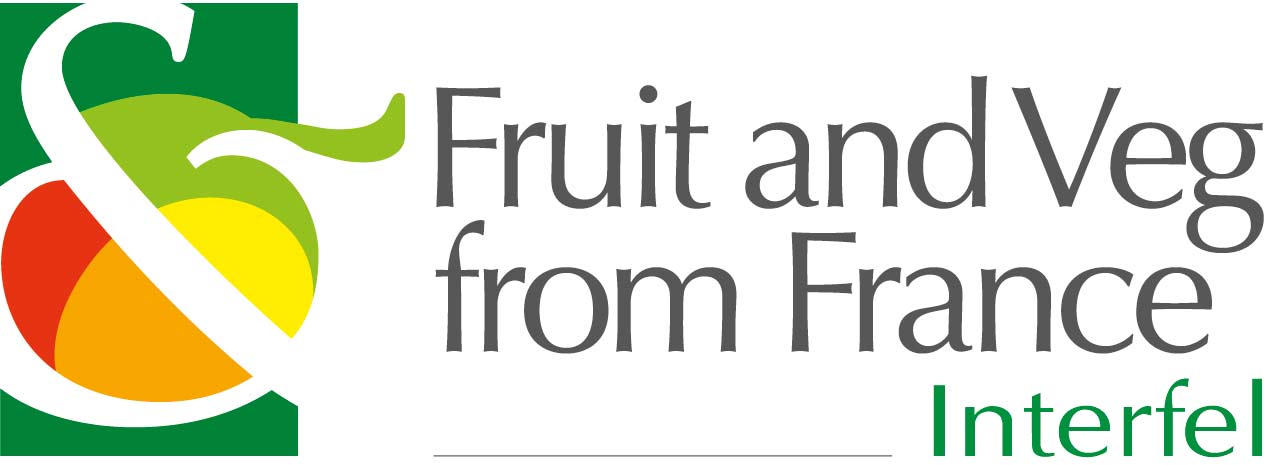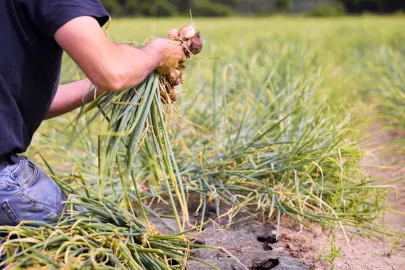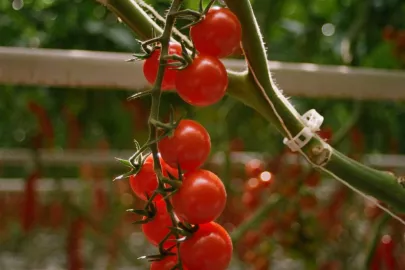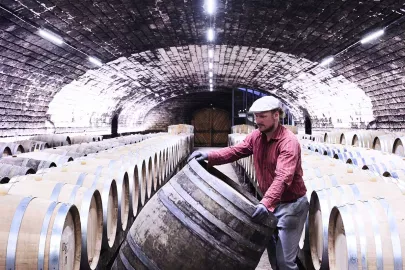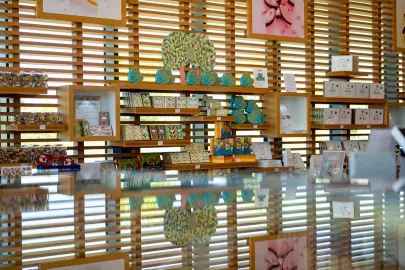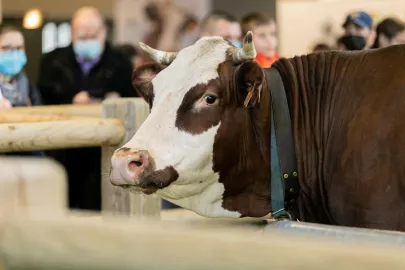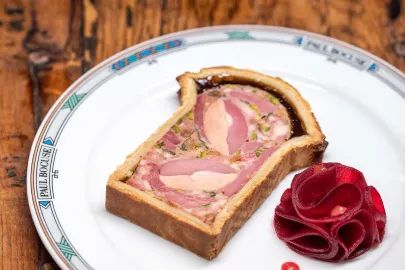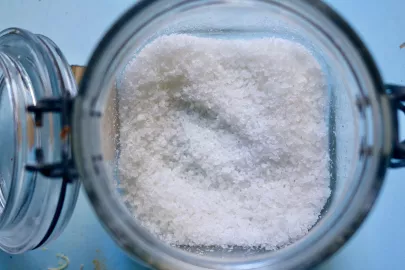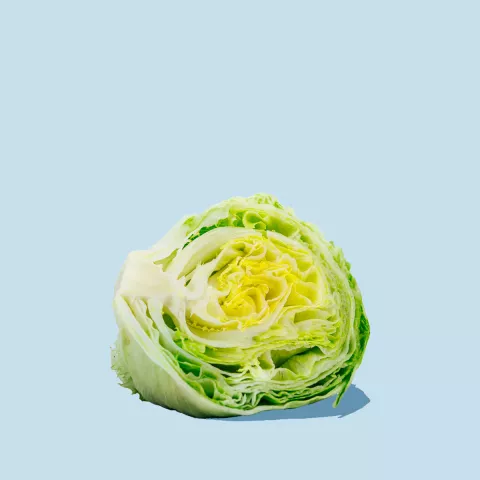Pears are an ancient fruit. And it’s no wonder they’ve survived their 4,000-year history: available year-round and with a variety to match just about any recipe, they’re a robust, juicy product that’s equally well paired with bittersweet dark chocolate as with a tangy, mellow Roquefort.
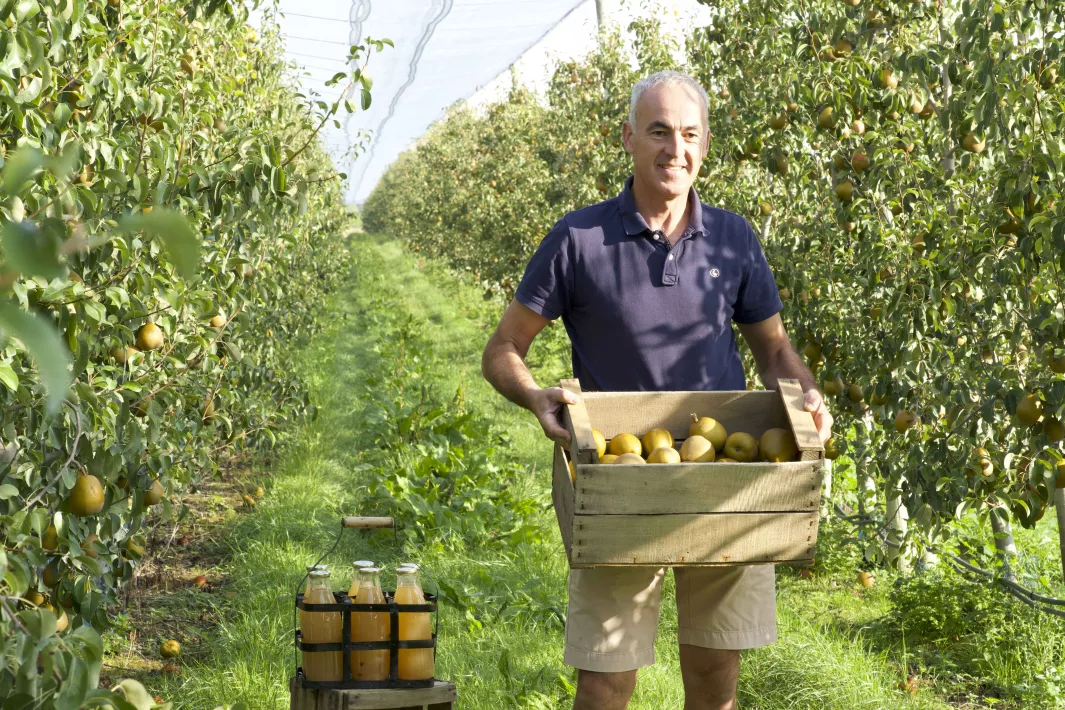
How do you grow the perfect pear? With their delicate skin and juicy flesh, French pears are a little more temperamental than most fruits. This is the expertise of Sylvain Brault, a skill set he spent years honing on his family’s farm nestled among the rolling, green hills of Brissac, just south of Angers in Pays de la Loire.
The farm—worked by his father and uncle before him, now with himself and his cousin Olivier at the helm—is covered in pear trees, towering overhead in long, thin, delicate rows. Today, the grove is full of fruit, ready to pluck straight from the branch. Speaking to camera in an interview for Taste France, Sylvain smiles when discussing his principal variety: the Angys®, formerly known as Angélys pear.

“The Angys® has a lot going for it,” he explains. “We had to choose a variety that was productive, had good storage capacity, but was also the gustative quality. It almost melts in your mouth, and like many pears, it’s also really juicy.”
There are over 2,000 varieties of pear across the world. France produces just ten, with varieties divided into seasons. The most popular include the Guyot and Williams, enjoyed in summer; autumn pears, the Beurré Hardy, Alexandrine, Comice; and winter, the Conférence, Passe Crassane, and Angys®. This pear is the result of a cross between two French varieties, mainly grown in the Loire Valley and Hauts-de-France.
Ripe for the picking
The pear Angélys is typically copper-skinned, more round than other varieties, and relatively resistant to bruising. Pears have certain seasons in which they are best grown; in particular is a winter pear, that can be found on our shelves from January to March.
Knowing when the fruit is ready to be harvested takes a skilled eye and hand. “We know they’re ready to be picked by measuring the firmness of the fruit,” Sylvain explains.
Around September, the farm begins to prepare for the harvest. For the majority of pears, the fruit is not eaten the moment it has been picked off the tree.

“Most pears can't be eaten when they’re picked from the tree. Pears should always be picked earlier and, of course, stored in a cool place so that they can be consumed at their best. We try to ship the fruit to cold storage as quickly as possible to optimise their shelf life.”
That’s why Sylvain’s team needs to be very precise about when they harvest. Testing the flesh for the right moment is an important part of the job. Once the fruit has reached the perfect moment, the fruit is delicately hand-picked towards the end of the month before being placed in palettes to be taken to cold storage.

In Sylvain's 300-tonne cold store, the pears are waiting for the perfect moment to be released for sale in January.
“This variety of pear pass a minimum of two months in cold storage,” Sylvain says. “This allows them to develop their aromas. Later, they’re moved to a maturation room—rooms that are at an ambient room temperature and a bit humid—which allows them to attain that melt-in-the-mouth quality.”
Behind every pear lies a French know-how
While the timing may differ, this is the same process all pears undergo. In 2024, the French countryside produces approximately 119,000 tonnes of the fruit across its three main pear-producing regions of Provence-Alpes-Côte d’Azur, Auvergne-Rhône-Alpes and Centre-Val de Loire.

Interestingly, the trees can live up to 200 years. They’re hardy plants, able to withstand cold temperatures—as low as -20 degrees Celsius. Despite such longevity, cold temperatures during the tree’s flowering season can have a negative impact on the production of fruit. With unstable weather impacting most of France over the last few years, pear production overall has seen a drop in yield.
“Every year is different,” Sylvain explains. “When we get to the harvest, it’s all there, the fruits of our labour. But when we have a good year, we have good fruit—it's just happiness, that's all. It's pure pleasure.”
A good yield, and the resulting fruit is fleshy and firm, juicy and aromatic with a long shelf life. It’s the perfect option for a rich dessert, like poached in red wine and served with a sweet vanilla Chantilly with crispy rye; roasted and complemented with an earthy Bleu d’Auvergne and mâche salad; or grilled on rye with melty Bleu d’Auvergne, drizzled with honey and sprinkled with spicy piment d’espelette.
So, how do you know when your pear is at the perfect moment to eat?
“If it is a little soft, then it’s the perfect moment to enjoy,” advises Sylvain. Firm pears should be left to ripen a little longer; too soft, and it’s best used in recipes that need the fruit cooked, like this mouth-watering pear and chocolate tart.
The diversity of French pears makes them an ideal ingredient whatever the weather. From fresh summer salads to warm winter roasts, they’re the perfect sucré-salé pairing for simple dinners to gourmet affairs with friends.

